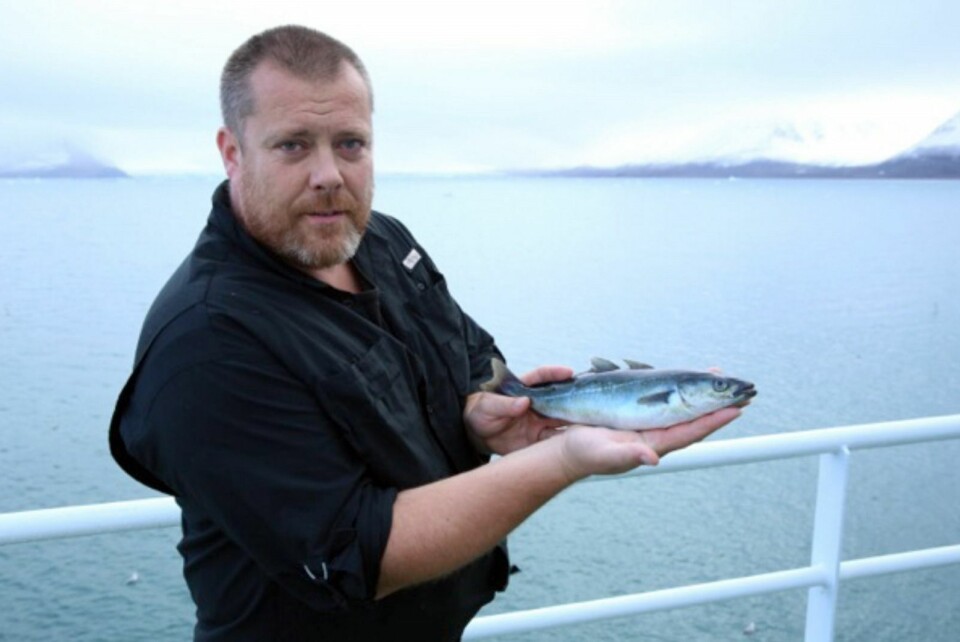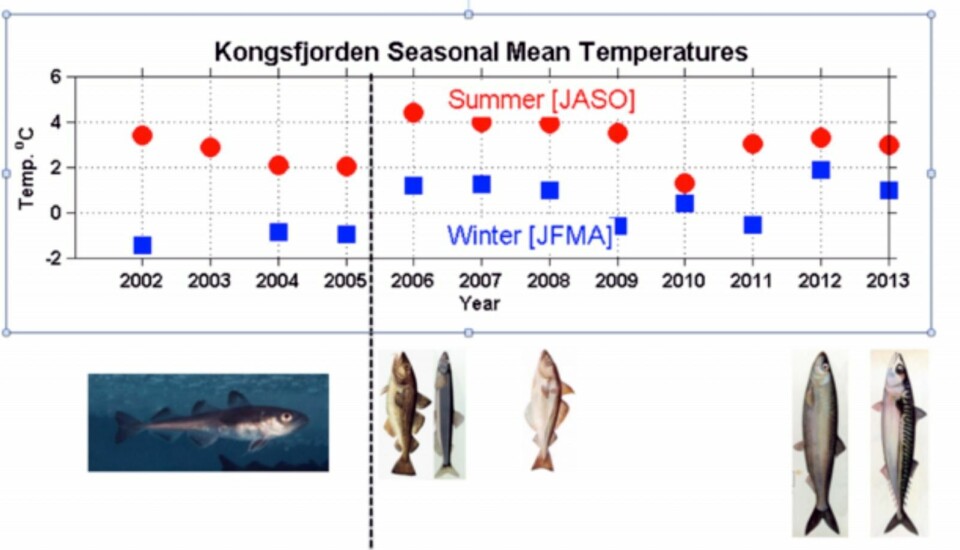Chronicle:
Saithe and fresh cod - from Svalbard?
"It's the first time in my career as a marine biologist in Svalbard that we did not find a single Arctic cod deep in Kongsfjorden."

Denne artikkelen er mer enn 10 år gammel.

The fish stocks in the fjords of Svalbard have changed dramatically during the past 10 years. I have previously reported in Svalbardposten about the prevalence of cod, haddock, herring and mackerel in Kongsfjorden, so this is in itself not a shocking news story. Nor is it sensational that we found pollock in Kongsfjorden during the year's fall cruise with students from The University Centre in Svalbard. The Institute of Marine Research in Norway has, for example, conducted their ecosystem surveys in the waters around Svalbard for many years, and submitted extensive documentation both on a general change in the fish stocks and the presence of pollock west and north of Spitsbergen. However, what is new is the fact that we found pollock in the innermost part of Kongsfjorden. And, not least, what we didn't find there - Arctic cod.
It's the first time in my career as a marine biologist in Svalbard that we did not find a single Arctic cod deep in Kongsfjorden. We caught lots of cod and haddock, and we got a saithe with a trawl, but no Arctic cod. That is a very strong sign of a changing ecosystem! UNIS has since the early '90s completed annual fall cruises along the western and northern sides of Svalbard. I myself have been involved in these the past 15 years. Despite the fact that we've known there were cod in Kongsfjorden right from the start – my colleague Professor Bjørn Gulliksen dived for years down to a "secret cave dwelling" where a small group of cod seemed to have taken permanent residence in a small cave at approximately 30 meters deep near Kvadehuken – and know that around 1870 plenty of cod were already being caught in Svalbard, the fish stocks inside Kongsfjorden until relatively few years ago were largely dominated by Arctic cod. When I wrote this text on board the research vessel Helmer Hanssen I went through old notes and photos from the early years I was in Svalbard, and there is no doubt that the stocks have changed radically. That also applies to temperatures in the fjord. The attached figure shows the average winter and summer temperatures in Kongsfjorden from 2002 until 2013, and stems from a scientific work published in connection with mackerel first being captured in Svalbard. The temperature in Kongsfjorden has the changed little during the past two years and as of this writing is about the same as the summer of 2013. The figure shows an abrupt increase in winter temperatures in the fjord, with the subsequent occurrence of cod and capelin in 2006, haddock in 2008, herring in 2012 and mackerel in 2013, and now saithe in 2015. The correlation between increased winter temperatures and the presence of more southern species is complex and something we may not fully understand, but is at least related to both increased winter survival and, not least, an increased inflow of Atlantic water in the fjords.
But, as said, it's not just what we did find that makes this story interesting; it is equally significant what we did not find. Specifically, Arctic cod. There is little doubt there are still Arctic cod in Kongsfjorden, but we found no Arctic cod during a bottom trawl which previously captured significant amounts of Arctic cod and, in recent years, some individuals. But we always got some. This year it was zero. Arctic cod are an important species in the ecosystems up here, especially as food for seals, whales and seabirds. Now it's not a given that it's a total disaster for the ecosystem that Arctic cod are being replaced with common cod - as long as there is food. But a very important point here is that Arctic cod is a species that is in the bay throughout the year, possibly even their entire life. It does not migrate, but reproduces locally. Young Arctic cod are a potentially important source of food for other animals and, perhaps most importantly, offer a local food source throughout the year. Cod, pollock, haddock and mackerel, however, will set off on long journeys and are only available as food during parts of the year. In addition to this, there are indications the entire stock has been altered - where previously we got into a lot of crustaceans, starfish, sea urchins and other "trifles," we are now almost only getting shrimp. Both cod and haddock are famous for their appetite, which eventually begins to be noticeable on the benthic fauna in the fjord!
But all the changes are obviously not just negative. As the ecosystem is changing, new opportunities pop up. With the quantities of cod and haddock we found in the Isfjorden and Kongsfjorden during the past six or seven years, it is little strange that it is not possible to obtain fresh local fish in Longyearbyen. If nothing else, I would strongly recommend the city's population try fishing in the fjord - plenty of good meals are swimming there!
